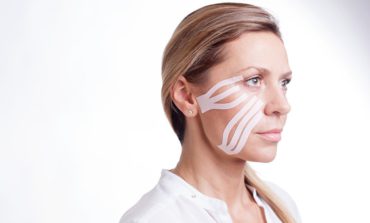The Frustrating Mystery: Why Do Fit People Get Cellulite?
According to research data, between eight and nine women in ten (and only one man in 10) have cellulite. Of course, we all know that excess body fat often means worse cellulite, but we’ve also seen numerous pictures of celebrities, supermodels, and athletes with cellulite. How can it be that even strong, fit people who eat healthily and exercise a lot get the tell-tale dimples?

First of all, what you see when you look at cellulite dimples is not fat per se. Fat cells are connected to the skin by myriads of collagen fibers, which is a female body run perpendicular to the skin (men have a different configuration, thus almost no cellulite). While it is true that reducing the amount of fat can make cellulite less visible, it is actually collagen and elastin that matter most.
The collagen cure
Remember that there are several types of collagen in the body, which both are formed and broken down. Here are a few things you can do to keep your levels of collagen healthy:
- Use sunblock! UV radiation breaks down collagen, making cellulite worse;
- Exercise your skin by exfoliating it – it stimulates the production of new skin cells and collagen fibers;
- Eat foods rich in antioxidants, such as vitamin C and hyaluronic acid: dark green vegetables, beans, tomatoes, oranges, and berries;
- Aloe vera, taken both orally and topically, has been shown to increase collagen production;
- Retinol, or vitamin A, has been found to help collagen formation: among its best sources are fish, dairy products and milk, meat and poulry.
While many anti-aging creams containing retinol are available on the market, retinol in ready form is difficult for the skin to absorb; it is better to eat retinol-rich foods.
Keep your hormones happy
Another important factor influencing collagen production is hormonal balance. Both too much and too little female hormone estrogen can hamper your collagen formation (more on this here). While hormonal imbalances must be treated by a medical professional, here are a few things that may help:
- Maintain a good balance of omega-3 and omega-6 fatty acids in your diet;
- Get more sleep;
- Take care of your digestion – fermented dairy products like kefir can help, or consider taking probiotics;
- Drink less coffee and alcohol;
- Choose an exercise program that promotes hormone health (such as yoga, pilates, or HIIT), but avoid over-exercising, since it can increase the level of stress hormones;
- Consider trying adaptogen herbs, such as reishi mushrooms and rhodiola, which are reported to reduce stress, restore the body and prevent ageing;
- Avoid beauty products containing parabens;
- Try to eat less processed foods – a recent study has shown that some additives can mimick estrogen in the body.
And remember: while cellulite is partly genetic, it is genetic in 90% of women. How much or how little of it you will get depends on your whole lifestyle. But if you have already invested lots of time and money into fitness programs and strength training,and your cellulite is still there, don’t despair: there is still a lot that you can try.





